

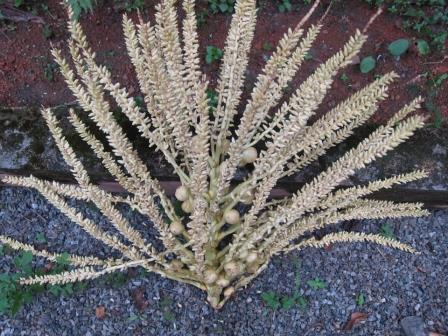
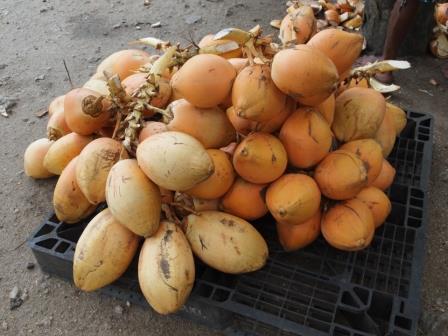
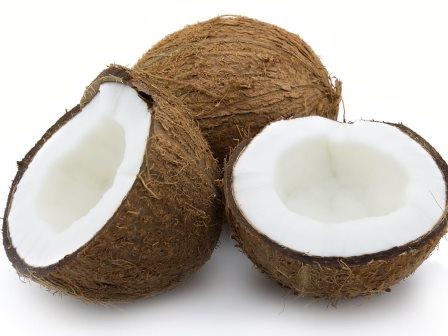
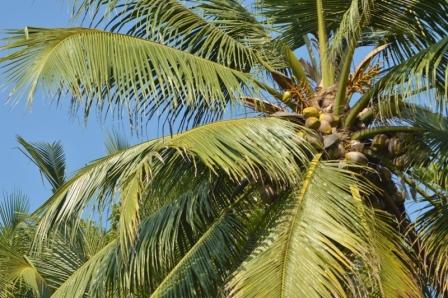
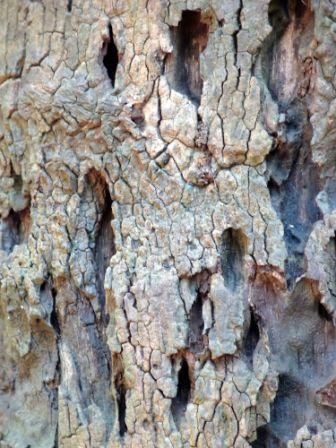
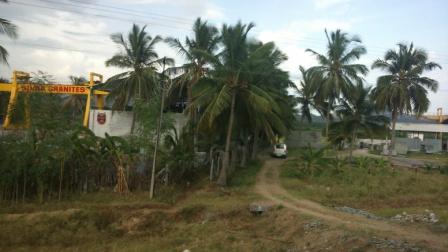
• The trees have a smooth, columnar, light grey-brown trunk.• The leaves are crowded together at the top of the trunk in the form of a crown.• Fruit is drupe, having three regions and one seeded.
• It has generally been accepted that the coconut originated in the Indian-Indonesia region and float distributed itself around the world by riding ocean currents.
• Propagated by seedlings raised from fully mature fruits. • Seeds selected from high-yielding stock with desirable traits.
• Seed storage behavior is recalcitrant. • The best germination was given at 30-35 deg. C with sucrose concentration of 10% and gelatin concentration of 30%.
Nursery Area:• Select nursery area in a well drained plot with coarse texture soil near water source for irrigation.• Nursery can be raised in the open space with artificial shade or in the adult coconut garden.Seed Nut Planting:• Plant seed nuts in a long and narrow bed at a spacing of 30 x 30 cm either horizontally or vertically in deep trenches with 20-25 cm depth.• Five rows of nuts may be planted in each bed accommodating 50 nuts per row.Intercultural Operations in Nursery:• Irrigate the nursery beds once in three days.• Keep the nursery free of weeds. • To manage the weed problem in coconut nursery, growing sun hemp 2 times (each harvested at flowering stage) followed by one hand weeding at 6th month was found to be very effective besides yielding green manure for manuring the adult coconut palms.• Provide shade to the nursery by raising Sesbania or Leucaena on the sides of beds.• The seed nuts start germination 6 – 8 weeks after planting and germination continues up to six months. • Select seedlings that germinate before 5 months after planting. • Remove those nuts which do not germinate 5 months after sowing.• Regularly survey for pest and diseases.Selection of Seedlings:• Select seedlings 9 to 12 months after planting. • Seedlings, which have germinated earlier, having good girth at collar and early splitting of leaflets, should be selected for planting.Seedling Harvesting :• Remove the seedlings from the nursery by lifting with spade. • Do not pull out the seedlings by pulling leaves or stem.• Select quality seedlings with a minimum of 6 leaves and girth of 10 cm at collar.
Spacing :• Adopt a spacing of 7.5 x 7.5 m with 175 plants/ha. • For planting in field border as a single row, adopt 20 m spacing between plants.Planting :• Dig pit size of 30 cm3.• Fill the pit with FYM, red earth and sand mixed in equal proportions. • At the center of the pit, remove the soil mixture and plant the seedling after removing all the roots. • Press the soil well around the seedling and provide the seedling with shade by using plaited coconut leaves or palmyrah leaves.• Keep the pits free from weeds. • Remove soil covering the collar region. • As the seedlings grow and form stem, fill up the pits gradually by cutting the sides.
• Plantation should be kept weed free with proper soil and water conservation measures.
• Twelve months old nuts are harvested at the interval of 30-45 days for seed as well as copra making and culinary purposes.
• Average Nut yield is approximately 70 to 100 nuts/tree/year
Food: • Copra, the dried coconut endosperm, contains an edible cooking oil • Other food derivatives of coconut include coconut chips, coconut jam, coconut honey, coconut candy and other desserts.Fodder: Copra meal and coconut cake, the residues of oil extraction from copra are used in cattle feed rations.Fiber: • Three types of fibers are obtained from the coconut husks: mat fibre or yarn fiber, used in making mats; bristle fiber, used for brush making; and mattress fiber, used in stuffing mattresses Leaflets are used in braiding mats, baskets and hats.Timber:• Coconut trunks can be used for poles, as they have great strength and flexibility.• The wood can also be used for furniture and parquet flooring.
Fibre: